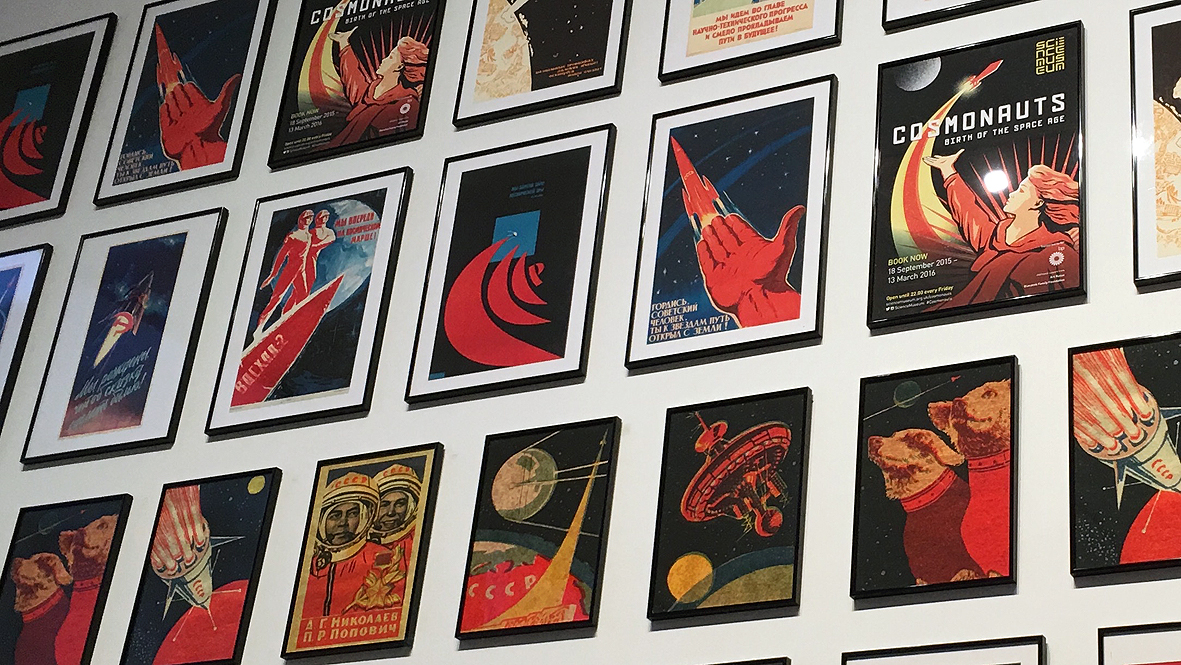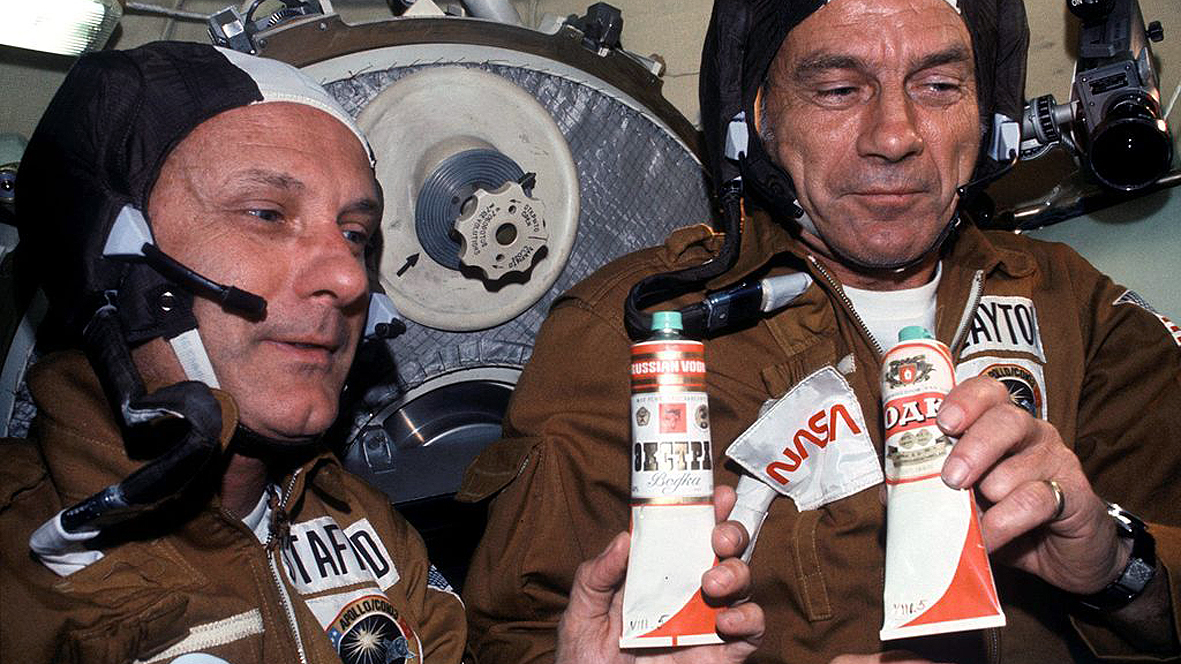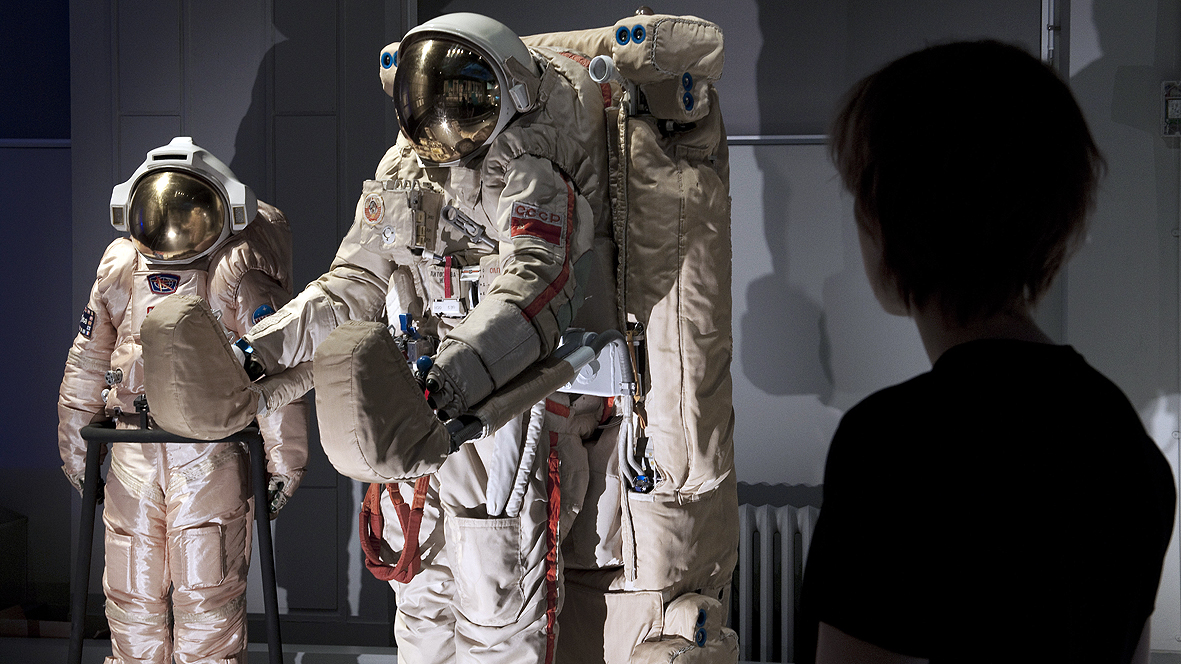
While the U.S.A supposedly won the space race - with the admittedly impressive feat of putting a man on the moon - It was the Soviet Union that led the way with practically every other space 'first'.
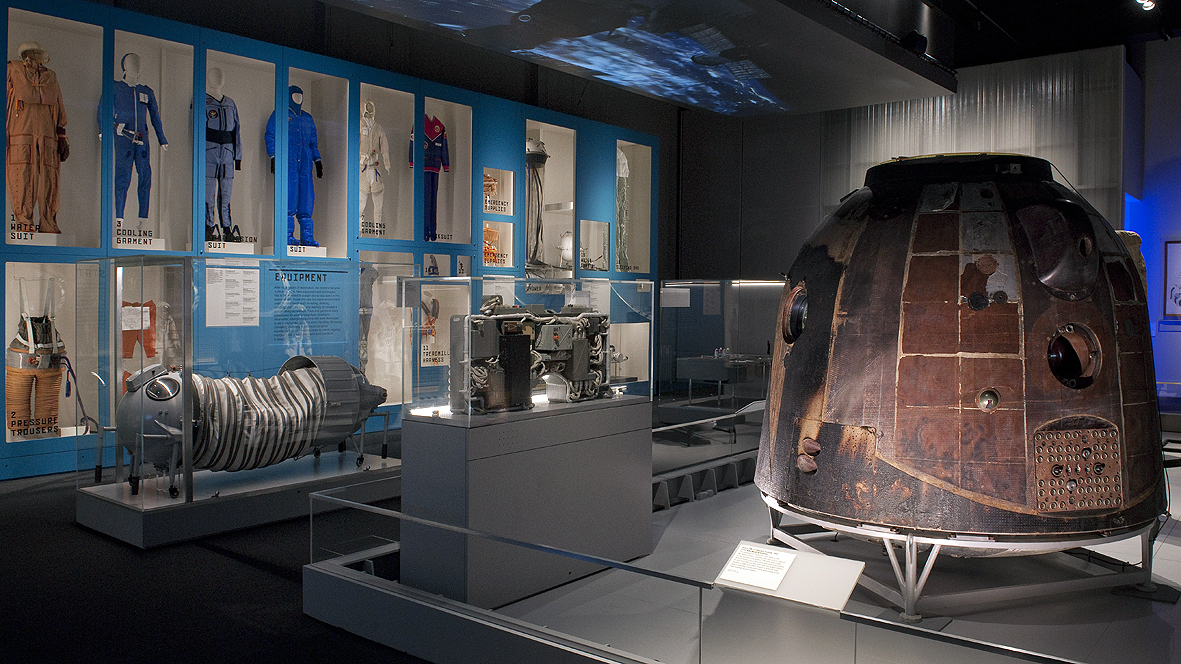
The Soviets were behind the first satellite in orbit (Sputnik 1), first man in space (Yuri Gagarin), first woman (Valentina Tereshkova), first dog (Laika) and first spacewalk (Alexey Leonov).
What's more, it was also responsible for the first photos of the dark side of the moon (Luna 3), first probe to orbit the moon (Luna 10), first multi-person crew (Voskhod 1) and first space tourist (Dennis Tito on Soyuz TM-32). Even following the Apollo moon landings, it was the Soviet Union that was the first to build a space station (Mir).
However, until now Soviet and Russian space tech has been wildly underrepresented, especially at London's Science Museum, with its permanent space gallery including only a passing mention.
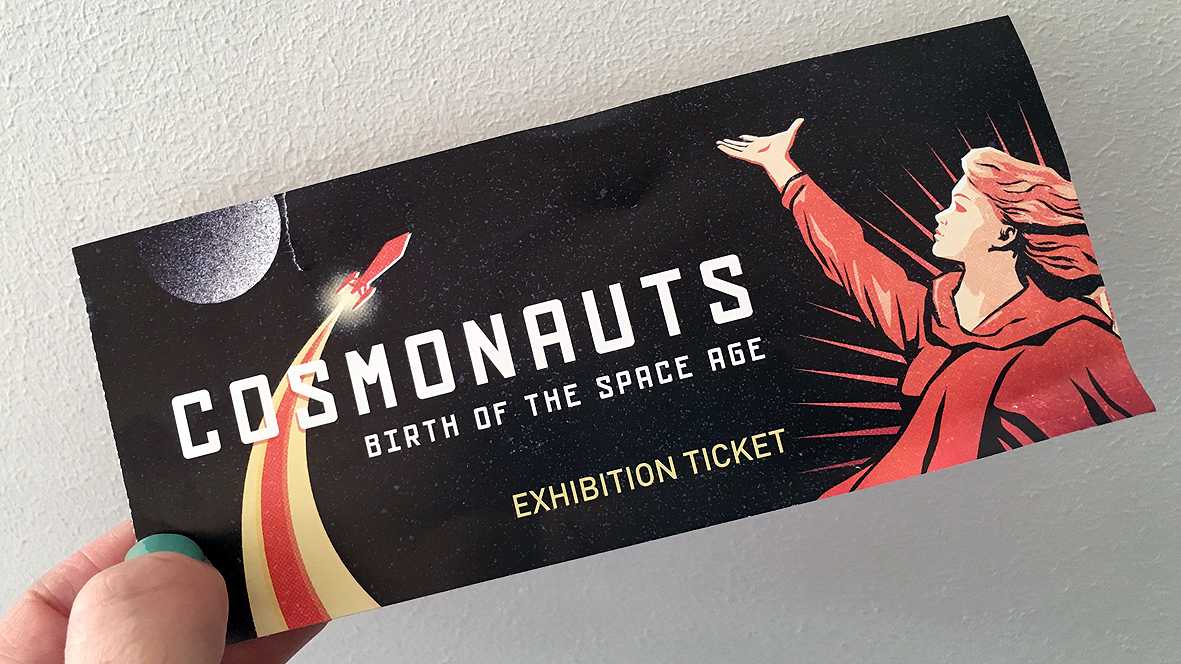
The South Kensington institution is putting that right with its museum-based form of Perestroika in which curators have gathered together the largest collection of Russian space exploration artefacts ever seen. Brought in from numerous locations, most of the pieces on show have never been on public display before.
The impressive selection of artefacts ranges from early satellites and spacecraft to personal cosmonaut memorabilia and Soviet space propaganda.
Techie highlights include Tereshkova's Vostok 6 capsule, visibly charred from its re-entry into Earth's atmosphere, along with first multi-person space craft Voskhod 1 and the spacesuit used by Helen Sharman who became the first Briton in space when she flew to space station Mir in 1991 on a collaborative mission between Russia and a collective of British companies.
Sign up to the T3 newsletter for smarter living straight to your inbox
Get all the latest news, reviews, deals and buying guides on gorgeous tech, home and active products from the T3 experts
A scale model of the stunning Sputnik 1 hangs from the ceiling as you enter the exhibition. The Soviet Union's visionary rocket engineer Sergei Korolev, then only known as the mysterious 'Chief Designer' cannily declared that the history-making satellite needed to look good as one day it would be displayed in museums around the world.
Seeing numerous parties of school kids arriving at the Science Museum reminded us how just important this exhibition is. When the T3 crew were at school in the dying days of the Cold War, we were taught about Gagarin and Tereshkova and not much else.
It wasn't until 1989, with Mikhail Gorbachev's Glasnost reforms in full swing, that the Soviet Union even admitted that it had worked on a manned lunar programme, which it ditched in 1970 after Neil Armstrong beat them to the moon.
The Cosmonauts exhibition includes the LK-3 Lunar Lander - a five-tonne spacecraft built to go head-to-head with Apollo - a sight never seen outside of Russia before.
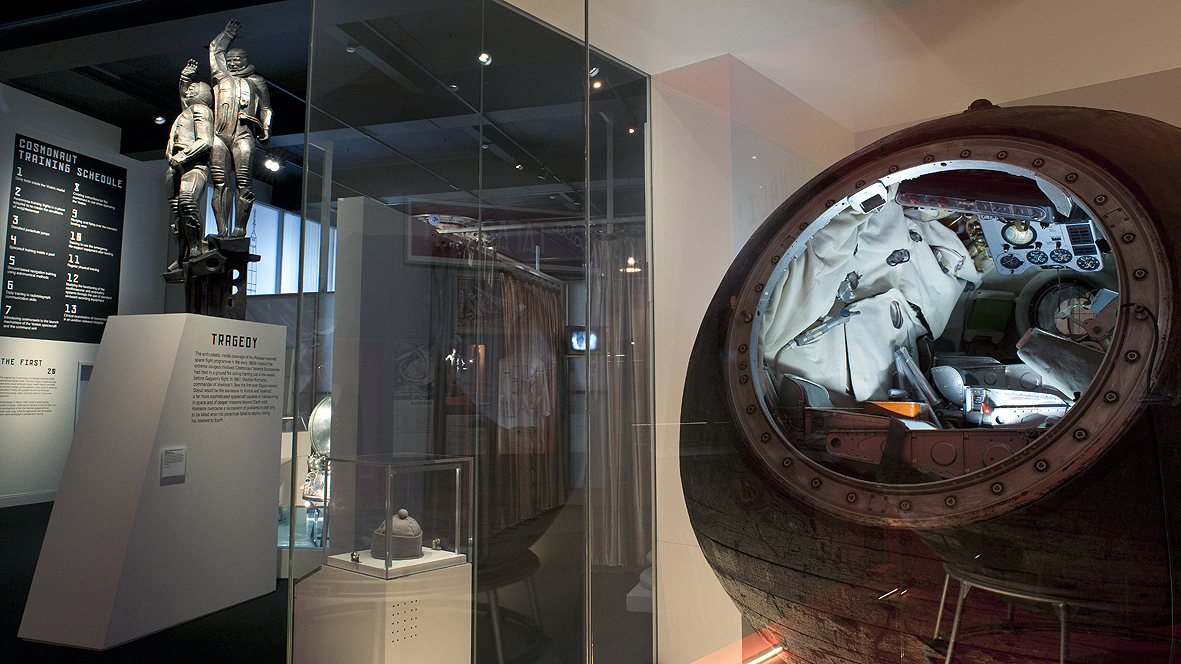
Perhaps the most fascinating aspect of Russia's space success is the admirably lo-fi tech that it used. Early Soviet space science was largely carried out on extremely limited budgets in the 1950s by self-formed groups who even resorted to melting down cutlery to build rockets.
While NASA worked on more technologically advanced capsules, Russia continued launching astronauts with relatively primitive spacecraft, which is what helped it to beat NASA to so many space 'firsts'.
That's not to say that the Soviets' technological achievements were any less impressive than the Americans - they just tended to opt for simpler, sometimes more effective solutions to get the job done. A great example of this from the exhibition is a dining table from the Mir space station, which bears more than a passing resemblance to a1980s Donkey Kong 'cocktail table' arcade cabinet. The table has different compartments for storing and heating food. Though some 'space food' was developed, the Soviets stuck largely to Earth-based foods that could be transferred to orbit. The tablet features a powerful vacuum in the centre to suck up any crumbs.
Another way in which Russia definitely, irrefutably won the space race was with its naming of spacecraft and kit, opting for a far more whimsical approach that its American counterparts.
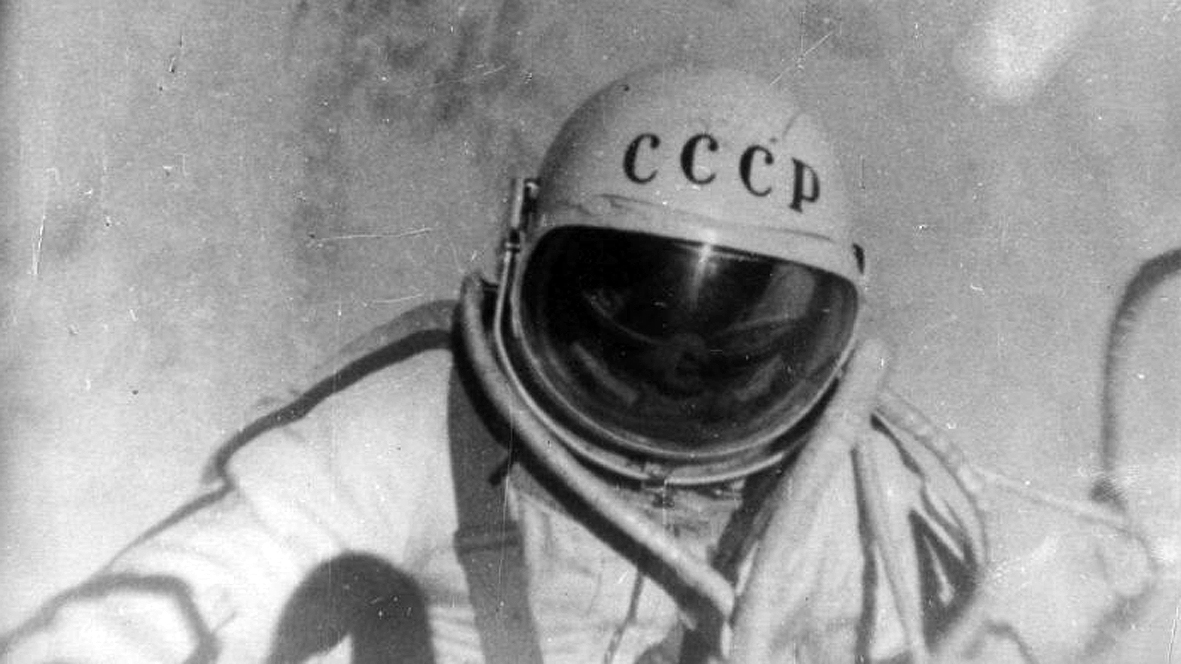
For example, NASA's spacesuit is called the Extravehicular Mobility Unit (EMU). It's pronounced E-M-U, with the Americans not even opting for the slightly more fun avian acronym 'emu'. In contrast, Russia's spacesuit is called 'Orlan' which translates as the slightly more majestic 'sea eagle'.
It's also interesting to note the distinct differences in design aesthetics between the Russian and American space gadgets. While NASA tends to opt for white and clean, straight lines, the Russians stick to more muted colours like pale green and beige, and employ a lot of rounded edges.
Along with historic spacecraft and spacesuits, the exhibition includes lots of other treats for space nerds including Yuri Gagarin's military uniform, the camera used to capture the first images of the dark side of the moon, and a space dog ejector seat.
If you're after a souvenir from your visit, be warned that you're not allowed to take photos in the exhibition but, naturally, the gift shop is stacked full of space goodies. You can choose from a vast array of merch including Laika cuddly toys, Gagarin T-shirts and a fine collection of Soviet space art prints. We opted for a print of Soviet space dogs Belka and Strelka, taken from a Soviet matchbook design.
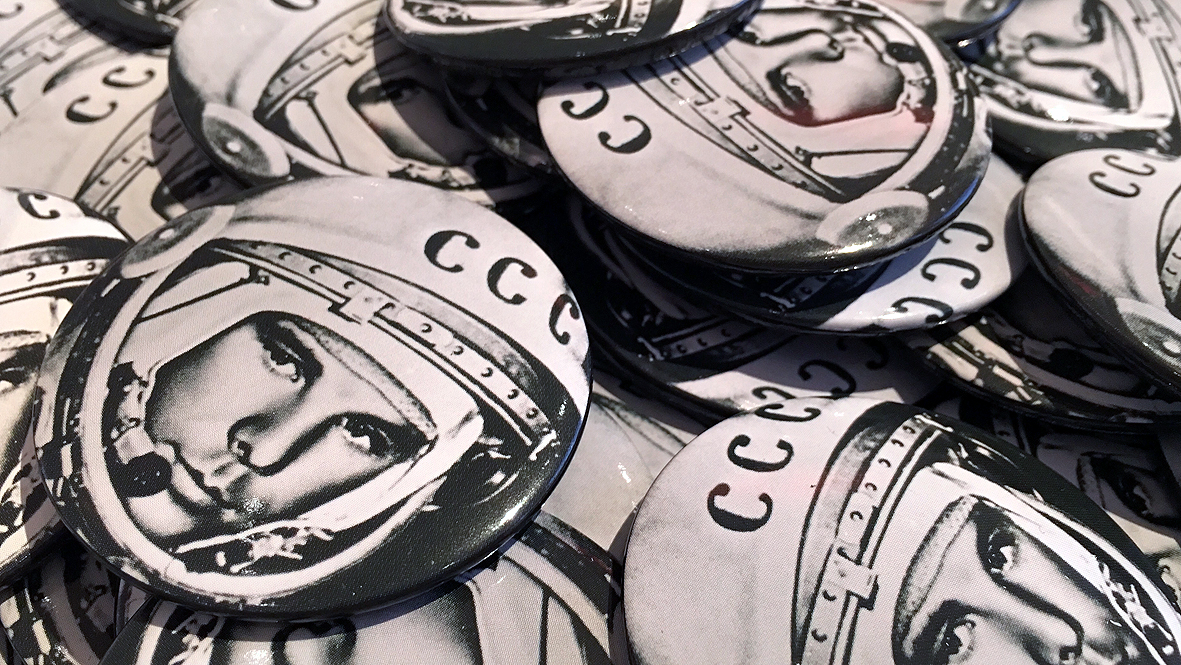
The ticket price of £14 is an absolute steal for the chance to see a slice of gloriously retro technology and Cold War history rolled into one.
While previously overlooked, Russia's contribution to the rich history of space exploration has finally been given the fanfare it deserves.
Despite its turbulent political history, Russia led the space race for many years and in a way, it still does. If it weren't for Russia's ageing Soyuz spacecraft, NASA and its fellow international space agencies would have no way of getting astronauts to the International Space Station.
And one final tip: don't miss the massive Lego Soyuz capsule on display in the museum's main gift shop.
Cosmonauts: Birth of The Space Age is open at The Science Museum until 13 March 2016.
